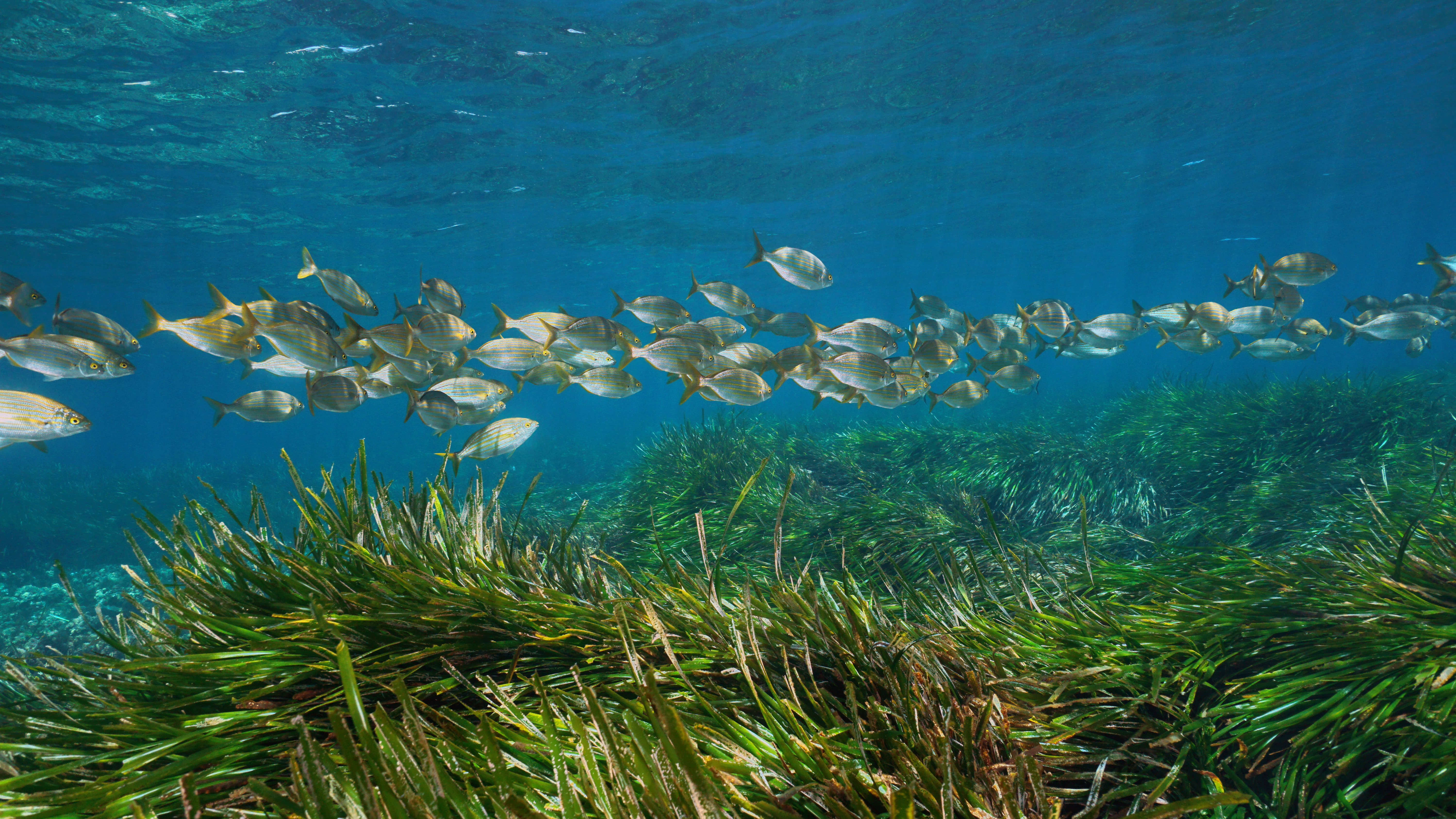Professor Carlos Duarte gives TED Talk on seagrass

KAUST Distinguished Professor Carlos Duarte delivering TED Talk.
“These are no ordinary grasses!” hailed KAUST Distinguished Professor Carlos Duarte of marine science in the opening to his recent TED Talk.
There are few better placed to make such a bold statement. Professor Duarte has been researching seagrass since the late 1980s, when not much was known beyond the fact that seagrasses are a group of flowering plants that acquired the capacity to complete their life cycle fully submerged in the sea.
The seagrass under the microscope in his TED Talk, and the subject of Duarte and his team’s genome studies for the past seven years, is Zostera marina. Thanks to their work, this is the first marine angiosperm or flowering plant, to our knowledge, to be fully sequenced.
“Only about 70 seagrass species have been able to conquer the oceans,” Duarte added. “Using genomic sequencing techniques we identified, between the islands of Formentera and Ibiza in the Spanish Mediterranean, clones of Posidonia oceanica, the dominant Mediterranean seagrass, extending up to 15 kilometers in linear size. These clones could occupy the entire island of Manhattan!”
Seagrasses such as this crawl along the seafloor and grow exponentially to form massive clones like this one in the Spanish Mediterranean, which is estimated to be 200,000 years old.
They play a crucial role in supporting marine life, protecting coasts from erosion and capturing carbon from the atmosphere, this latter trait being of particular interest to Duarte and his KAUST team in relation to Zostera marina.
A champion of carbon sequestration
They calculated that one hectare of this Mediterranean seagrass sequesters as much carbon as 15 hectares of the Amazonian rainforest.
How is this possible?
“First, they rank amongst the most productive ecosystems on Earth, pumping huge amounts of CO2 into organic material through photosynthesis, much of that directly placed belowground as roots and rhizomes,” Duarte explained during his TED Talk.

The long, narrow, ribbon-like leaves of seagrass provide food and shelter for marine animals and mitigate coastal erosion and greenhouse gas emissions by cushioning the impact of sea waves while capturing carbon dioxide from the atmosphere.
“Their dense canopies filter our particles from the flow that are deposited in the seafloor, where the absence of oxygen makes decomposition slower, and where the absence of fires which returns much of forest carbon back to the atmosphere supports their long-term storage.”
Expanding upwards from the seafloor at rates between one and four centimeters per decade, the clone in the Mediterranean stands at four meters tall and has reached a thickness of 11 meters over 5,000 years of expansion.
Such physical properties, Duarte believes, make the protection and restoration of seagrass a key solution in not only the battle against climate change, but also subsequent sea level rises and increasing prevalence of stormy conditions.
However, Duarte explained in his talk that this is easier said than done, not least because we do not know how much seagrass is there to protect, with estimates suggesting there could be anywhere between 150,000 and one million square kilometers.
This uncertainty is compounded by the fact that only shallow formations can be seen from space, while surveying with SCUBA divers is time consuming and costly.
However, Duarte outlined new surveying methods in the form of tracking green turtles and tiger sharks through a collaboration with Beneath The Waves.
And early signs show their awareness campaigns are working. Recent studies reveal that seagrass is recovering in areas such as North America, Europe and the Far East, in part thanks to conservation efforts. For example, in Virginia’s coastal waters, some 7.5 million seagrass seeds were placed and by 2018 the meadow had grown to 20 square kilometers in size.
Marine rice on the menu?
And it is not just in the climate change arena that seagrass is proving its worth.
Duarte's research team at the KAUST Red Sea Research Center found eight major changes to the genome were required to achieve the 'major milestone' in plant evolution of going back into the ocean and colonizing the sea.
The implications are important, especially around the genetics behind the ability to adapt to saltwater environments, knowledge which could hold the key to the future of food production and food security.
“My friend, three-star Michelin chef Angel Leon, has planted, for the first time, a field of the same seagrass, Zostera marina, to collect its seeds and use them to feed people,” Duarte revealed. “A crop that requires no freshwater, does not need to be removed to collect the seeds, sequesters carbon and supports marine biodiversity while it delivers healthy ‘marine rice’ for us.”
Indeed, learning about Zostera marina’s adaptations may pave the way to understanding how other crop plants such as rice can adapt to growing in saltwater environments.
In light of his and KAUST’s research, Duarte believes we have a unique opportunity to rebuild marine life around the restoration of seagrass, a prospect which could change the course of climate change and our relationship with growing food.
“Decisive action over the next three decades will allow us to hand over a healthy ocean to our grandchildren, and help us win the race to stabilize our climate,” he said in conclusion at his TED Talk.
Related content
- Ready for the high seas?
- Nature paper: The genome of the seagrass Zostera marina reveals angiosperm adaptation to the sea

